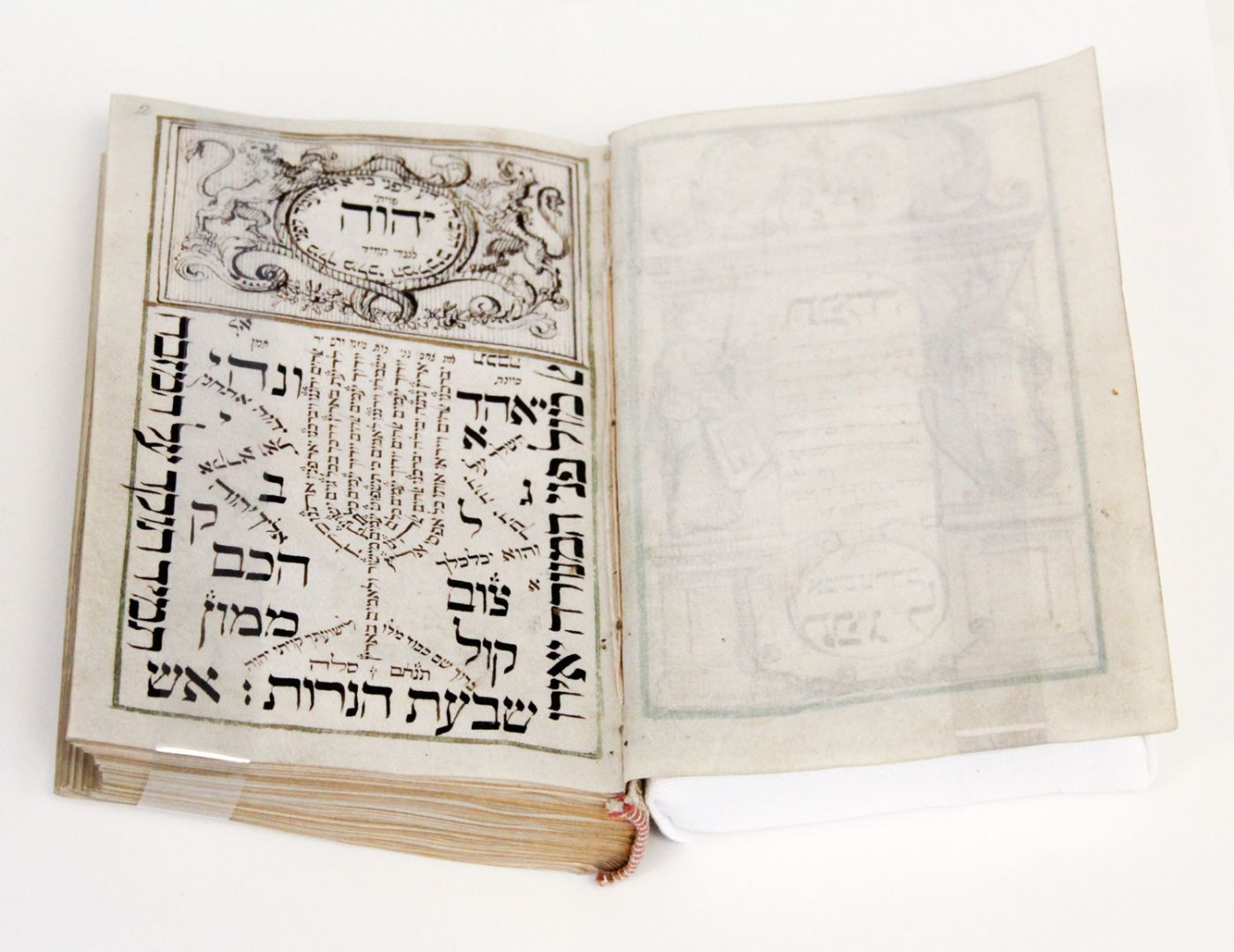2. Hall - 3. view
Prayer book
Prayer book, Trebic. The importance of handwritten prayer books remained unchanged even after the spread of printing, because of Judaism’s tradition to written letters. Illustrated and hand written luxurious prayer books for personal use became fashionable in the 18th century, mostly among Central European wealthy Jewish families. The first page, following the cover page of the prayer book, helps the reader meditate and contemplate. The most typical text here is the Psalm 67, which is arranged in the shape of a Menorah. Psalm 67 is a part of the daily prayer, asking for the time when every nation recognizes the divine truth and brings peace to the world. According to Jewish tradition, the author of this psalm is not David, but the wind, which played on his harp. Since the menorah is the symbol of miracle and salvation, it is the appropriate form for the miracle expecting content of the text; but more mystical explanations are also known regarding the connection between the two. The 49 words of the seven-verse Psalm are distributed in a 7-6-6-11-6-6-7 pattern. Writing them below each other they form a rotated menorah. A protective power was attributed to this typographic layout of the Psalm, written in the form of the menorah, which frequently appeared in the Jewish visual culture from the 16th century onwards. Trebic, 1723.
